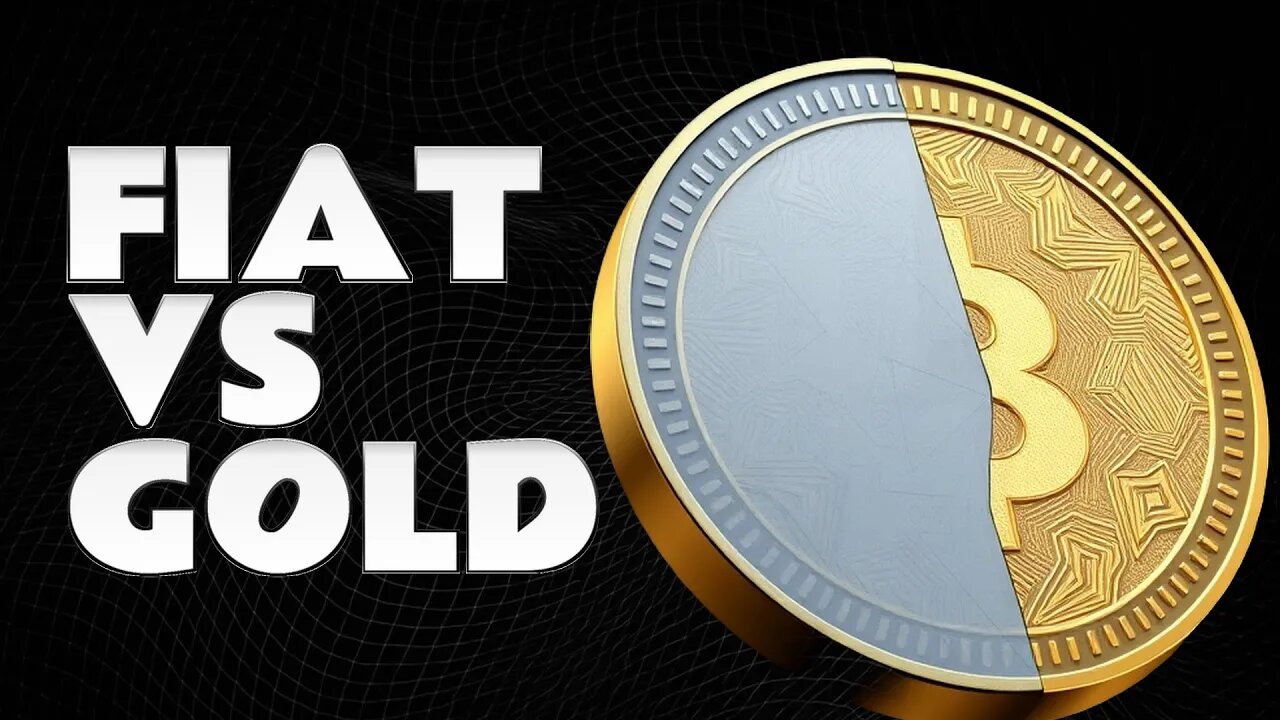Premium Only Content

Fiat Currency vs Gold Standard: What's the Difference?
The debate between fiat currency and the gold standard has been a central topic in economic discourse for decades. Understanding the differences between these two monetary systems is crucial for grasping the complexities of modern economics and financial stability.
Fiat currency is a type of money that is declared by a government to be legal tender, but it is not backed by a physical commodity. Instead, its value is derived from government regulation or law. Examples of fiat currencies include the U.S. dollar, the euro, and the Japanese yen. The primary advantage of fiat currency is its flexibility; governments can control the money supply through monetary policy, influencing economic variables such as inflation, interest rates, and economic growth. However, this flexibility can also lead to instability if the government mismanages the economy, leading to hyperinflation or economic downturns.
In contrast, the gold standard is a monetary system where the standard economic unit of account is based on a fixed quantity of gold. Under this system, the currency's value is directly linked to the value of gold. Historically, the gold standard has been used to ensure the stability of currency values and to prevent governments from printing excessive amounts of money, which can lead to inflation. The gold standard was widely used until the early 20th century, particularly during the Bretton Woods system established after World War II. However, the gold standard has its own set of challenges, including the limitation on economic growth due to the fixed supply of gold and the difficulty in adjusting to economic shocks.
The transition from the gold standard to fiat currency has been driven by various factors, including the need for greater economic flexibility and the desire to decouple currency values from the fluctuations in gold prices. Fiat currency allows central banks to implement monetary policies more effectively, respond to economic crises, and manage inflation. However, critics argue that fiat currency lacks the intrinsic value and stability provided by the gold standard, making it more susceptible to economic manipulation and devaluation.
In summary, the choice between fiat currency and the gold standard involves a trade-off between flexibility and stability. Fiat currency offers the flexibility needed for modern economic management, while the gold standard provides a stable and tangible asset-backed value. Understanding these differences is essential for evaluating the strengths and weaknesses of each system and their implications for economic policy and financial stability.
Tags:
Fiat currency, Gold standard, Monetary policy, Economic stability, Inflation control, Central banking, Gold-backed currency, Bretton Woods system, Economic flexibility, Currency value
-
 2:45:52
2:45:52
DLDAfterDark
9 hours ago $14.13 earnedWhat Are We Missing From The Charlie Kirk Incident? Feat. TN Tactical - After Hours Armory Live!
39.2K11 -
 16:23
16:23
True Crime | Unsolved Cases | Mysterious Stories
1 month ago $5.32 earnedThe Strange Disappearance of Mekayla Bali | (Mini-Documentary)
36.8K5 -
 10:03
10:03
nospeedlimitgermany
13 days ago $9.12 earnedVW Golf 5 R32 | 250 PS | Top Speed Drive German Autobahn No Speed Limit POV
39.3K8 -
 1:35
1:35
Memology 101
1 day ago $7.75 earnedChicago Mayor Johnson calls LAW ENFORCEMENT a "SICKNESS" he will "ERADICATE"
41.4K44 -
 10:17
10:17
Advanced Level Diagnostics
13 days ago $7.63 earned2007 Chevy Express - Replaced Everything But The Code Remains!
44.2K1 -
 1:01:11
1:01:11
The Mel K Show
10 hours agoMel K & Harley Schlanger | History Repeats: A Wake-Up Call for Humanity | 9-20-25
106K29 -
 2:13:52
2:13:52
Mally_Mouse
18 hours ago🌶️ 🥵Spicy BITE Saturday!! 🥵🌶️- Let's Play: Lockdown Protocol (New Updates!)
99.3K6 -
 12:57
12:57
Culture Apothecary with Alex Clark
1 day agoMy Last 6 Years With Charlie Kirk | In Memoriam with Alex Clark
45.3K10 -
 2:48:55
2:48:55
Barry Cunningham
15 hours agoPRESIDENT TRUMP WILL ENSURE THAT CHARLIE KIRK DID NOT DIE IN VAIN!
80K136 -
 2:14:52
2:14:52
SavageJayGatsby
14 hours ago🔥 Spicy Saturday - Let's Play: Lockdown Protocol 🔥
101K2